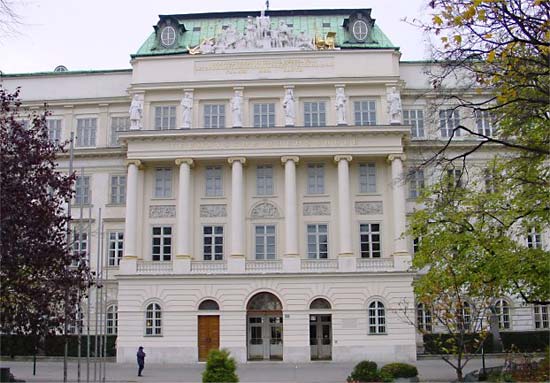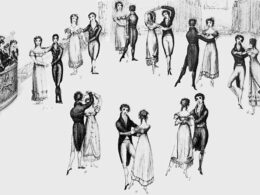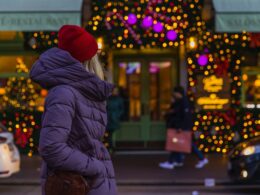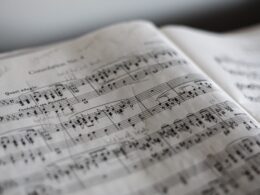Vienna has been consistent in maintaining its title as the world’s most livable city. For the seventh year in a row, the Austrian capital is on the top spot of Mercer’s list of the most livable cities in the world.
International consulting firm Mercer conducts a study of the world’s best cities every year. The goal is to assess the quality of life in 230 cities around the globe. For 2016, Vienna again bagged the title for the seventh time.
Mercer’s Quality of Living survey takes into consideration a city’s political, social and economic climate, education, medical care and infrastructure including power and water supply as well as public transportation. It also looks into recreational facilities such as cinemas, theaters, restaurants, sports facilities, green spaces and availability of consumer goods.
Education
 Vienna is a center of education as well as research and development with several notable universities in existence. Its top educational institution is the University of Vienna considered as Austria’s largest and highest-ranked university. Wordlwide, it is ranked 153rd in the QS World University Rankings. Today, this university is one of Europe’s largest with a population of 93,000 students. In addition, it has produced 15 Nobel Prize winners including the recipient of the Literature Prize in 2004.
Vienna is a center of education as well as research and development with several notable universities in existence. Its top educational institution is the University of Vienna considered as Austria’s largest and highest-ranked university. Wordlwide, it is ranked 153rd in the QS World University Rankings. Today, this university is one of Europe’s largest with a population of 93,000 students. In addition, it has produced 15 Nobel Prize winners including the recipient of the Literature Prize in 2004.
The Vienna University of Technology is another top ranking institution and Austria’s second representative in the world rankings (197th place). Founded in 1815, this prestigious technical university specializes in engineering and natural sciences and has an estimated 28,000 students, a large proportion of which are international students.
Green Spaces
In terms of green spaces, Vienna has lots to offer. In fact, the city is considered one of the world’s greenest major capitals with an estimated 50 percent of the area designated as green spaces.
Vienna today has 280 imperials parks and gardens that never fail to attract numerous tourists from around the world. The Prater Park is one of the city’s finest parks given to the Viennese by the late Emperor Joseph II. Spanning 4.5 kilometers, it also features the Hauptallee and the Wurstelprater amusement park. The famous Giant Ferris Wheel can also be found in the area.
Baroque Parks and gardens are plenty as well. They can be found at the Schonbrunn Palace and the Belvedere Palace. In the Schonbrunn Palace compound alone which is a 160-hectare World Heritage Site, visitors can already enjoy the former imperial gardens, the Palm House, the Maze, Gloritte, Japanese Garden, Desert Pavilion, the world’s oldest zoological garden and the Schonbrunn Zoo.
The Belvedere Palace, on the other hand, has its alpine garden considered the oldest in the world and the botanical garden which has 12,000 species of plants that came from around the world as well as varied domestic species of animals.
Another lovely garden worth noting is the Augarten, a public park measuring 52.2 hectares. Considered as the oldest baroque garden in
Vienna, this place features elaborate flower landscapes and different varieties of trees from the chestnut and elms to lime trees, ash trees and maple trees.
Then there’s the Vienna Woods which is part of the green belt. Designated as a Biosphere Reserve by UNESCO, it spans 9,900 hectares and is the habitat for some 2,000 plant species, 150 bird species and many more endangered animals. The Vienna Woods also has walking and hiking paths which are easily accessible by public transport.
The city also boasts of vineyards that feature produce some of the world’s best wines and which have hiking trails as well. Apart from these vineyards that offer wine tasting activities to visitors, there are also the wine taverns around the city worth visiting if you want to relax and enjoy some drinks with loved ones and friends.
Recreational Facilities
Facilities for all types of recreation abound in Vienna. Visitors who want to experience the city’ rich culture should not miss the 7th district of Neubau where the MuseumsQuartier Wien is located. Here, one can visit museums, concert halls and a theater. Beautiful architecture can also be seen among many of the city’s historial structures that date back to the Middle Ages. Some of them have even been designated as UNESCO World Heritage sites.
Those who want to enjoy the night life can check out various pubs and clubs around the city. The subway between the Thaliastrasse and Nussdorferstrasse stations are known for clubs such as Chelsea and Rhiz bar that play live music.
For people who love to shop, there are plenty of options. You can check out the shops in the Ringstrasse or find the best bargains at the flea markets such as the Flohmarkt.
When it comes to food and drinks, Vienna boasts of various types of restaurants from the gourmet, organic and vegetarian to bistros and cafes. It is also well known to have several Michelin restaurants as well as cafes some of which date back to hundreds of years ago.
Whether you want to experience dining indoors or al fresco, there’s every opportunity to do it in the Austrian capital. Unknown to some, these Viennese cafes have invented the process of filtering coffee back in 1683.
Public Transportation
 Vienna is one European city with a well-developed public transport network. As such, people living and visiting Vienna have varied choices when it comes to the public transportation they can take to bring them to their preferred destinations. They can choose from the buses, trains, trams and underground (subway) lines in going around the city during the day and night. The Wiener Linien alone has more than 500 tramcars and nearly 500 buses.
Vienna is one European city with a well-developed public transport network. As such, people living and visiting Vienna have varied choices when it comes to the public transportation they can take to bring them to their preferred destinations. They can choose from the buses, trains, trams and underground (subway) lines in going around the city during the day and night. The Wiener Linien alone has more than 500 tramcars and nearly 500 buses.
To use any of these public transport system, one just needs to buy tickets from ticket machines available at various stations or on board the bus or tram. Another option is to buy them online via the Wiener Linien online shop. Validated tickets can be used for all public transport.
Apart from the single tickets, people can also purchase passes that can be used for longer periods such as for 24 hours or 72 hours. There are also weekly, monthly and yearly passes.






